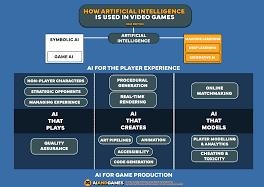AI upscaling is altering digital pictures and videos in a dramatic way by turning low-resolution pictures and videos into pictures and videos that look like they were made in 4K or 8K. AI doesn’t merely stretch pixels as old systems do. It looks at patterns, textures, and objects to guess and make new, very detailed things that have never been seen before. This generates images that seem and feel like real life.
Deep learning neural networks that have been trained on millions of pairs of low- and high-resolution photographs are what make AI upscaling work. These networks take a low-res picture and make a high-res picture that appears a lot like the original picture when it is made smaller. NVIDIA and other companies use Tensor Cores to get rid of compression artifacts, which are the ugly blocky distortions that arise when data is lost. Then they utilize them to recreate elements like fine hair strands or intricate architectural borders with astonishing accuracy. This method is like how an artist could look at a blurry picture and fill in the spaces without thinking about it. Instead of guessing, it uses strong pattern recognition and data.
In fact, this technology has revolutionized the way people play games. AI upscaling maintains visuals very clear while making the GPU work less hard by creating frames at lower resolutions and then upgrading them in smart ways. This makes the game run more smoothly and at a higher frame rate. Instead of putting a lot of pressure on technology to make native 4K or 8K frames, gamers may explore detailed landscapes that move seamlessly. AI’s adaptive texture recognition lets developers optimize for efficiency and accessibility in new ways. It preserves natural details like the fine veins on leaves and subtle facial expressions, which keeps immersion and emotional impact.
Making videos is also become a lot easier, especially now that 8K TVs are coming out. AI upscaling enables people show HD or 4K video without the usual pixelation or blurring that happens when the video is stretched to 8K. For instance, Samsung’s state-of-the-art Direct View LED displays use AI algorithms to look at each frame and fill in empty pixels with clear, relevant information. This alters the way videos look on big, high-resolution screens in a big way. AI upscaling not only provides new content, but it also helps fix old footage. It makes recordings that are decades old clearer and more fascinating to tell historical stories.
AI upscaling does more than just make pictures bigger. It illustrates that media with pictures is changing. It employs powerful computers, real-time machine learning, and studies on how people see things to generate pictures that look bigger and better. AI becomes an active enhancer, breathing new life into pixels instead of just extending them. This changes both the way creative people work and the way people watch.
Here are some reasons why AI upscaling is changing how games and media are made:
a. **Very efficient performance**: It takes inputs with lower resolution and turns them into outputs with higher resolution. This puts less strain on the GPU and speeds up game framerates.
b. **Content longevity**: Updating old games and video archives for modern, high-resolution monitors gives them a new lease on life without the need for expensive remasters.
c. **Incredibly clear visual fidelity**: AI does a fantastic job of handling textures and objects, beating typical upscaling methods that sometimes make pictures look fuzzy or blocky.
d. “Future-proofing”: It makes content ready for 8K and higher by adding extra pixels in a clever way instead of leaving black borders or making things look blurry.
e. **Creative flexibility**: Filmmakers and developers have powerful, easy-to-use tools that make production faster and better.
From consumer electronics to professional studios, NVIDIA, Sony, Samsung, and Boris FX’s Continuum suite all use AI upscaling in their products. This is setting a higher standard for visual quality and making people want more.
AI upscaling isn’t only a better way to use technology; it’s a great mix of AI and artistic skill. Gamers and content creators are on the verge of a visual renaissance as hardware becomes faster and algorithms get smarter. Every pixel will be precisely rebuilt, creating virtual landscapes and movies more vivid, emotionally powerful, and eye-catching than ever before.






